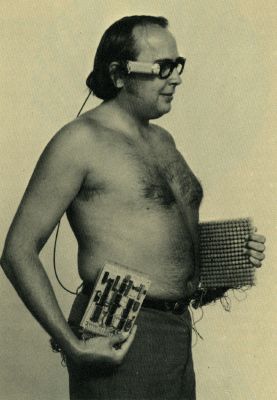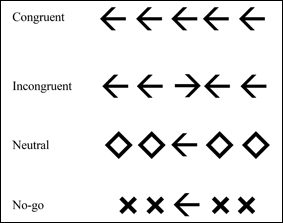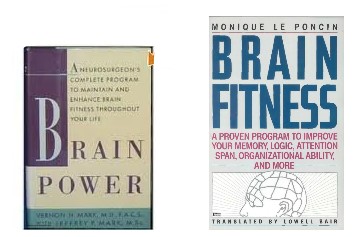Science on BrainApps
Alfred Binet carries out the research
The first test for intellectual development measurement 1905
Alfred Binet, French psychologist seeks to implement objective methods of research and, together with Theodore Simon develops the scale for assessment of the mental development of children with mental retardation. "The Binet - Simon scale of mental development " became the precursor of methodology for assessing the intelligence quotient (IQ) and the first serious test technology for the quantitative assessment of reasoning.
The appearance of the "intelligence quotient" term 1912
William Stern, child psychologist and one of the founders of modern psychodiagnostics finalizes Binet’s methodology and introduces the characteristic of intelligence quotient (IQ) to measure child development instead of "mental age", proposed by Alfred Binet.
William Stern
A.R. Luria runs a diagnostics
The formation of neuropsychology science in USSR and first clinical tests development. 1920-1940
In the early 20-ies, L.S. Vygotsky developed the doctrine of the higher mental functions, which formed the basis of the work of his students and the development of the entire national psychology. Since the mid-40s, USSR meets the formation of the main practical methods of diagnosis and rehabilitation of patients who received brain damage - these developments formed the basis of neuropsychology. Neuropsychology is the branch of psychology that has been developed at the intersection of psychology, medicine and physiology. It studies brain mechanisms of higher mental functions with the material of local brain lesions. The founder of this direction was the A.R. Luria.
Raven’s Progressive Matrices 1936
A new method of estimating the level of intellectual development was designed in 1938 by L. Penrose and J. Raven. The test was designed to capture the full range of logical and visual-figurative reasoning - from reasoning of young children and subjects with intellectual disabilities to the reasoning of adults and the elder people. Subjects were shown figures associated with each other by the relationship that had to be determined.
Task example from Raven’s Progressive Matrices
Wechsler–Bellevue Intelligence Scale a standard set for conducting a test
Wechsler Test 1939
The emergence of the first test to measure intelligence of children, which was created by David Wechsler. Later, in 1955, the test was redesigned for adults. Today, it is the most popular research tool for intelligence quotient estimation. Many tasks from the test were redesigned and used as stand-alone exercises for development of cognitive functions.
N-back и Continuous performance task
1956-1959
The N-back task belongs to the class of Continuous performance tasks used in neurophysiology for assessment of working memory. The initial version of the task was suggested by Wayne Kirchner in 1958 to study age-related differences in the processing of the fast flow of information. Later, researchers have suggested the use of a task for the development of cognitive functions, the development of working memory and mental flexibility.

Scheme for doing exercises of continuous cycle
One of editions of the book by George Miller
Magic number 7±2 George Miller 1958
There was a book by George Miller, dedicated to working memory study, "The magic number 7 ± 2", which showed that the work of human memory is able to store about nine binary numbers at the average, eight decimals, seven alphabet letters and five monosyllabic words - that meant a person is able remember 7 ± 2 elements at the same time, and the memory capacity can be equated to 7 bits.
Paul Bach-y-Rita and the first studies of brain plasticity 1969
Paul Bach-y-Rita invents the BrainPort device, developing nonspecific parts of the brain and helping to recover lost brain function. This discovery has prompted a new look at the dynamics in the brain and has opened the study of of the brain neuroplasticity.

One version of the task
Corsi block task (Corsi block task)
1970
Corsi block task appeared in 1980, which allowed to explore the amount of working memory and its visual-spatial component. Th task was performed on a wooden egg capsules, which had to be selected in order of presentation. After adapting techniques to the computer, it has become one of the most famous games of memory development - it’s a game -
Memory matrices (Memory matrix).
Flanker task 1974
V.A. Erickson and K.V. Ekrikson develop one of the most important tasks for testing visual attention - flanker task. The technique is used for studying the spatial characteristics of the direction, scope of visual attention and spatial interference in information processing.

Example of a stimulus series in the task

Popularization of brain and publishing of numerous books on brain fitness 1990-2000
For the first time the term Brain fitness appeared in the scientific and popular literature in the late 80s, and finally entered the lexicon of books on self-development after the publication of books Vernon Mark and Jeffrey Mark "Brain Power: A Neurosurgeon s Complete Program to Maintain and Enhance Brain Fitness Throughout Your Life" , 1989. and the book "Brain Fitness " M. Le Poncin-Lafitte, Monique Le Poncin and Michael Levine, 1990.
Brain Age: Train Your Brain in Minutes a Day! для nintendo
2005
In 2005, Nintendo has launched the game for brain development called “Brain Age: Train Your Brain in minutes a day”. Brain Age offers a variety of puzzles and challenges, including techniques such as the Stoop test, mathematical examples and puzzles and Sudoku, it was the first product of brain development of such scale.
Lumosity (Lumosity)
2005
Appearance of the first online training system for brain development.
BrainApps.io
2014
In the summer of 2014, a team of experienced scientists launched a series of unique, complex game simulators designed for brain development. These innovative simulators were developed to enhance cognitive skills through engaging and scientifically-backed games that challenge the brain in various aspects. The initiative was part of a larger effort to make advanced neurological research accessible and practical for everyday use, turning cutting-edge science into fun, interactive, and beneficial activities.

IQClass.com 2018
The BrainApps team is launching a new project focused on brain training games specifically designed for children. This initiative aims to enhance cognitive skills and learning abilities through fun and interactive games tailored to the developmental needs of young minds.
IQClub.com 2024
In the spring of 2024, a team of experts launched a unique series of complex game simulators specifically designed to support brain development through focused reading exercises. These simulators aim to improve various cognitive skills, including reading comprehension, speed, and retention, using interactive and scientifically informed methods.
Start to develop your brain
right now
More than 1 038 468 people are already
using BrainApps


